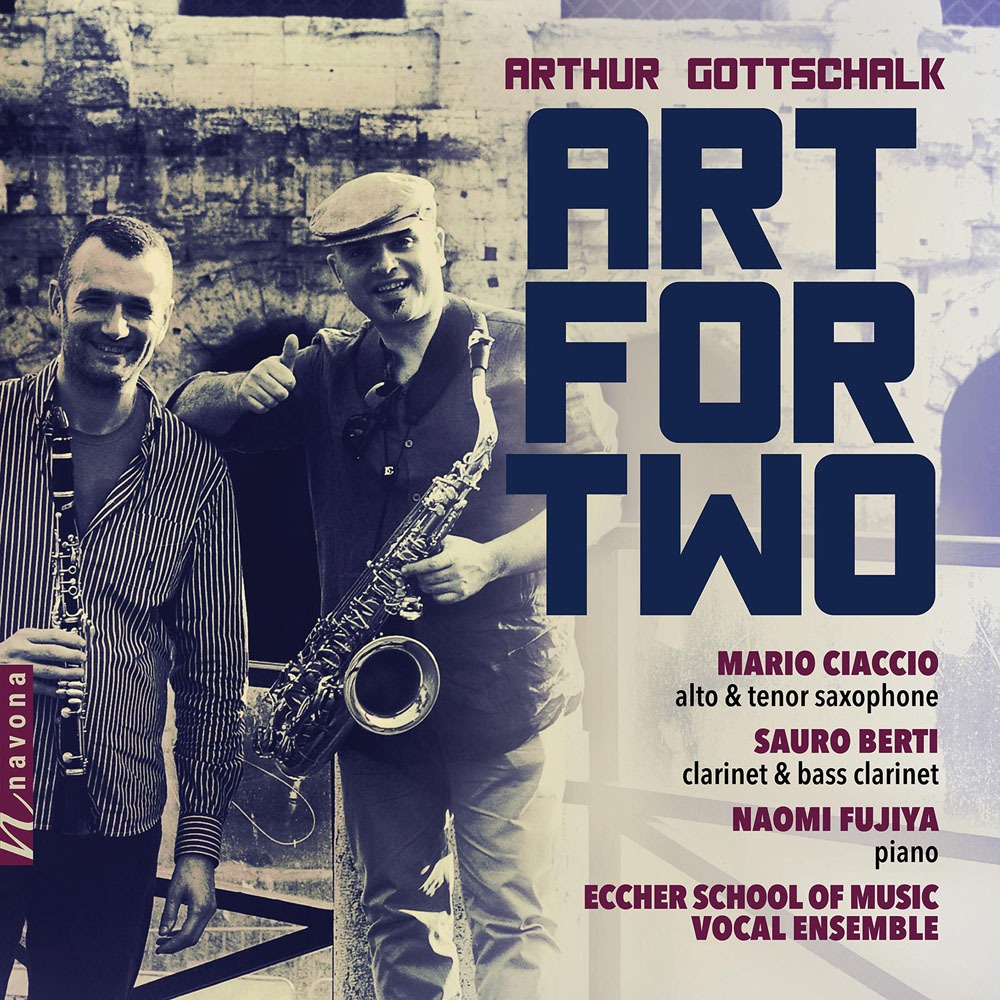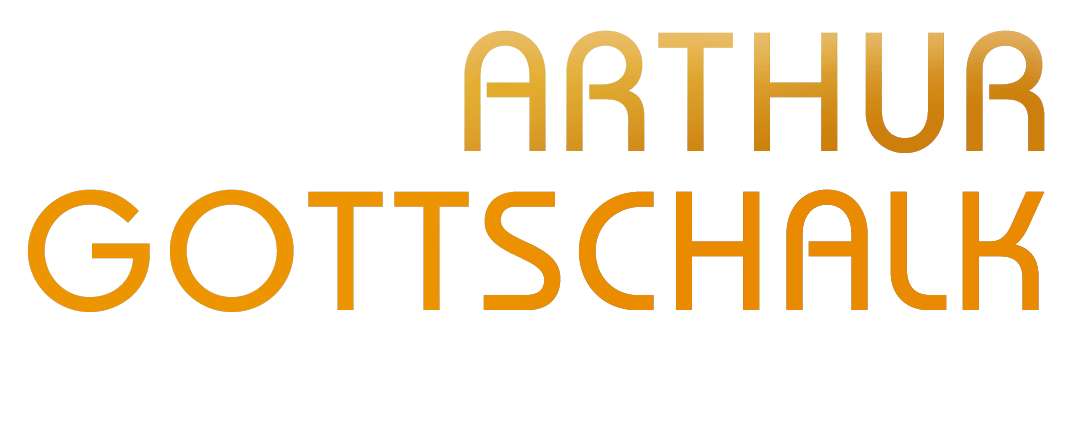
Fanfare Magazine Review: ART FOR TWO
Originally Published By: Fanfare Magazine
Although I enjoyed Arthur Gottschalk’s Requiem: For the Living (Fanfare 39:3), I am aware his music has received a mixed reception, specifically via my colleague Ronald E. Grames’ review of the self-same release in that issue.
The present release, punningly entitled Art for Two, offers a succession of smaller-scale works. The format is minimal packaging, with artist biographies in an insert but with rather limited (at the time of writing) booklet notes on the web at navonarecords.com/catalog/nv6185/. The playful quasi-Minimalism of Benny, Zoot and Teddy (2012) for clarinet, tenor saxophone, and piano is that of light-hearted conversation; banter or badinage, perhaps, which later morphs smoothly into jazz. The mellowing of the music is artfully conveyed by Berti and Ciaccio, while Gottschalk’s harmonic sleights are often delightful. Humor is there, at one point the laugh-out-loud sort. The issuing company has helpfully uploaded this performance to YouTube.
Written in 2007, the Sonata for Alto Saxophone and Piano is in three movements, including a central teasing, jazzy “Waltz Nocturne” (Ciaccio’s control of his instrument in the closing measures of this central panel is remarkable). The first movement, although only four minutes long, is remarkably wide-ranging, finding large contrasts within its limited duration. Berti and Fujiya are clearly on the same wavelength. A pity the recorded piano sound is somewhat insubstantial (the ear adjusts, but even so) as this sounds like a definitive performance. The finale, entitled “Bravura!” is good old plain fun while living up to its title.
Eschewing pianistic intervention, Oh, More or Less (2011) is scored for tenor sax and clarinet. It is a joy to experience two musicians so tied to each other: Much of the writing is in rhythmic unison, and the pleasure of the accuracy of delivery (plus the way both players grade their diminuendos exactly the same way) is positively life-enhancing. The Sonata for Bass Clarinet and Piano (2009) boasts some fascinating movement titles: “Overture, Salt Peanuts Memorial Barbeque”; “Motet—Ancient Incantations”; “Finale—Green Dolphy Street Boogie.” Sadly, the titles are not explained in the rather minimal online notes The “Overture” is actually rather complex and yet manages to be fun, too, particularly the cheeky close. The “Motet” begins with a piano-only, high-register repeating gesture that operates like glistening light over the bass clarinet’s long melody; there is little hint of the power of the climax. On its return, the opening music comes as a relief, now like droplets in a pool. I am being fanciful in my descriptions, I know, but this is music that invites such journeyings. Finger clicks and someone counting begins that boogie finale, rhythmically alive; various clicks pepper its surface. The performance is given with huge confidence.
Finally, Shalom of 2015 for tenor sax, bass clarinet, and choir. After the outrageous play of “Green Dolphy Street Boogie,” the peace of Shalom is quite some way. The choir’s initial repetitions of the word “shalom” act as the sonic equivalent of waves in the sea; the pairing of the two wind instruments against the later devotional deep chordal choral textures works splendidly.
A most enjoyable introduction to the (generally) lighter side of Arthur Gottschalk.
Colin Clarke
Related Articles
- April 17, 1994
Recent Articles
Upcoming Events
Upcoming Events
- There are no upcoming events.

